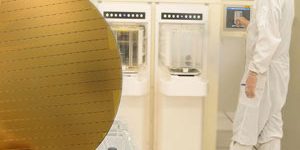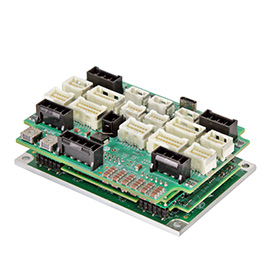A large semiconductor company that specializes in automatic production machinery for cleanrooms was building a robot for moving small LCD panels, such as used in smartphones, in a cleanroom environment. During production, the LCD flat panels go through several processes carried out by machinery in the automated cleanroom. The robot transfers the LCD screens and “feeds” them into the machine.
Read this case study to learn about:
- Getting up to 3.3 kW peak power using a matchbox sized servo drive.
- Placing your drive almost anywhere on your machine.
- Minimizing your development time, resulting in short time-to-market.
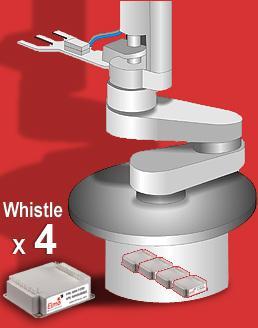
Machine Requirements
The robot has four degrees of freedom (DOF) with a multi-jointed arm; three of the joints enable the robot to move to the desired position in the plane and the fourth – a central shaft – extends its movements to three dimensions. Precision, accuracy and speed are essential features that are required in this application.
The robot consists of three joints and arms, one up/down lead screw joint that is used to transfer rotary movement into linear movement, the robot’s “hand” and “fingers”, and an outer casing in which the drives, multi-axis controller, power supplies and all the electronics are located.
The robotics team faced several design challenges:
- Limited space: The size of the robot’s casing could not be altered, as it is part of a large clean room machine. Therefore, compact drives with a small footprint were essential.
- Accuracy and fast movement, as they define the final throughput of the machine.
- Reliable drives with a minimal failure rate and high MTBF (Mean time between failures)
- The robot works as part of a machine that runs continuously 24/7, so any downtime in the process is very costly.
- Integration of the drives as part of a multi-axis motion control system must be easy and simple, to reduce R&D time and costs.
- The robot requires three digital outputs: (1) Alarm, (2) Servo On/Off and (3) Brake.
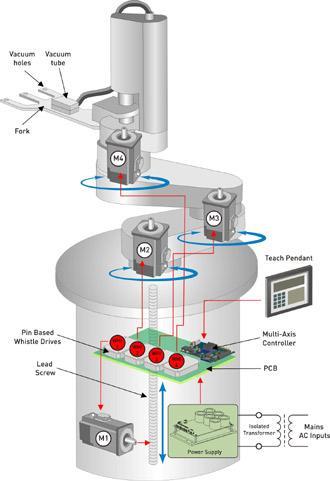
The Elmo Motion Control solution
- 4 Gold Whistle 20/60 servo drives
The Gold Whistle digital drive was chosen for this application due to its compact size. It is PCB-mounted and so can integrate into the joints of the robotic arm.
The Gold Whistle servo drives are designed to perform with high reliability and to meet 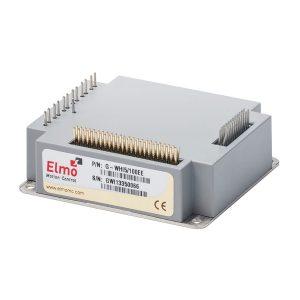
A peak current of 40 A can be delivered to enable the high acceleration of the robotic arm during its initial movement. The drives are able to deliver the LCD screens with very precise and smooth movement due to Elmo’s advanced motion control algorithms implemented in the drives and Elmo’s proprietary EASII programming software.
There is very limited space in the casing of the robot for the PCB (drives and multi-axis controller), z-axis lead screw and gearbox, power supplies, transformer, and cables, etc. Elmo’s compact and high-power drives were essential to keeping space requirements to a minimum.
Simple and fast integration of Elmo’s pin-based Gold Whistle servo drive on the PCB were essential for keeping the engineering development time to a minimum. The unbalanced vertical axis was controlled and tuned by Elmo’s up/down Gold Whistle servo drive using a special output for controlling an external brake.
Today’s Solution:
Elmo has introduced new solutions and options since this clean room robot was designed. Today:
- The optimal solution for this application would be a Platinum Solo Quartet, a 4-axis miniature, ready to use, motion control system – 4 x 5000W servo drive and 4-axis motion controller
- An alternative option would be to use 4 Platinum Twitter servo drives
- Using Elmo’s Platinum servo drives would add advanced functional safety features that are valuable for this robot since it works near people.
Platinum Solo Quartet
4X 5000W Servo Drive & Motion-Controller
Up to 25A/100V, 10A/200V, P50A/100V, R35/200V

